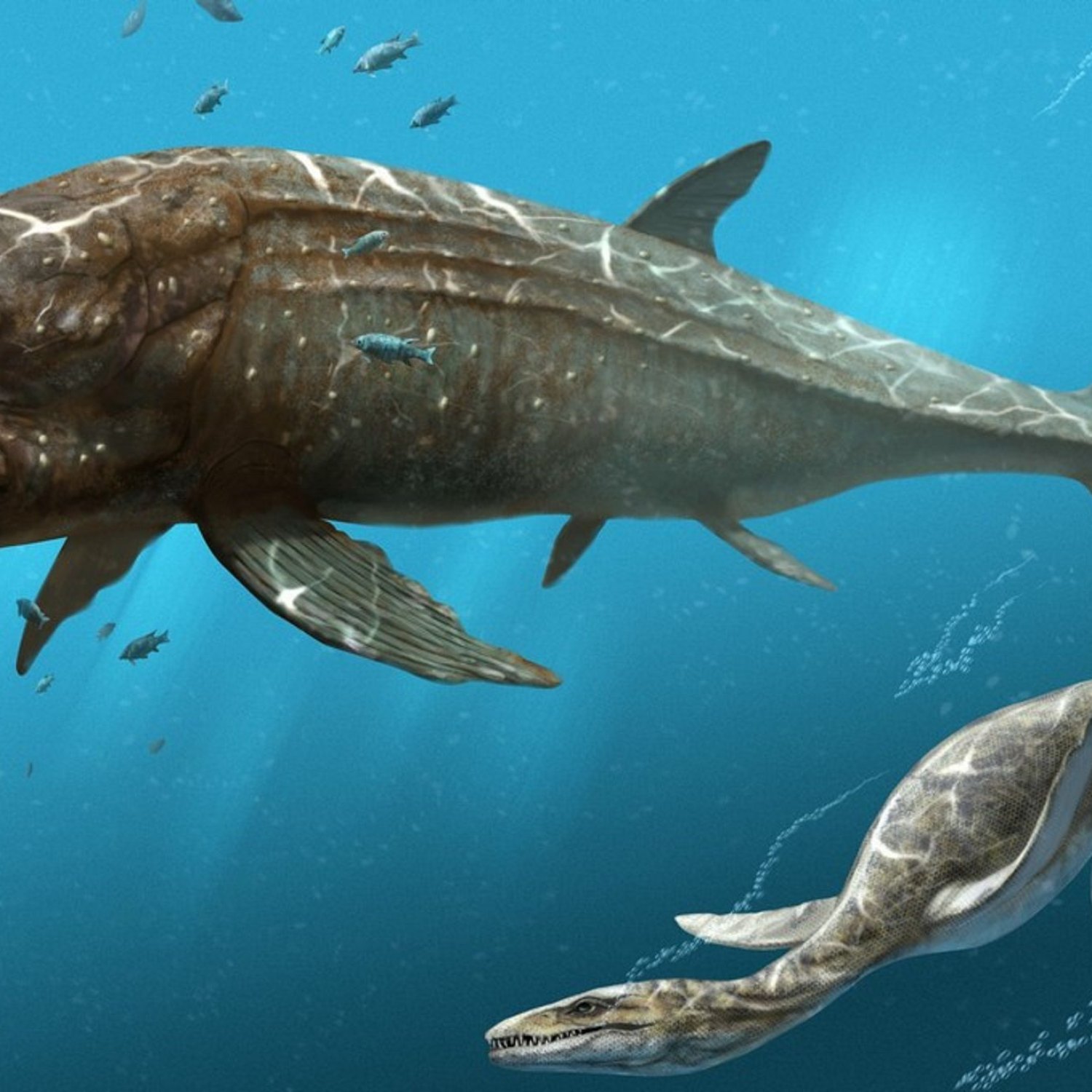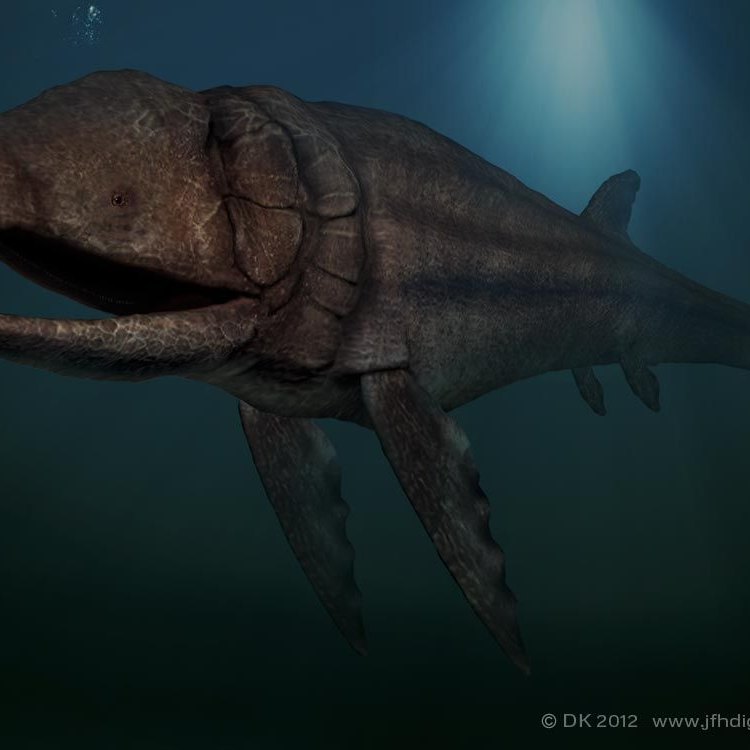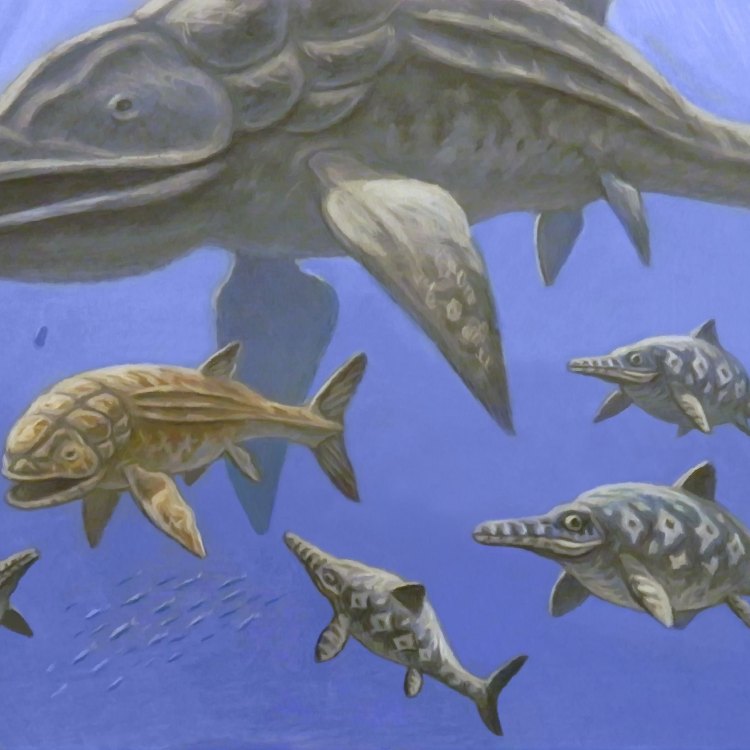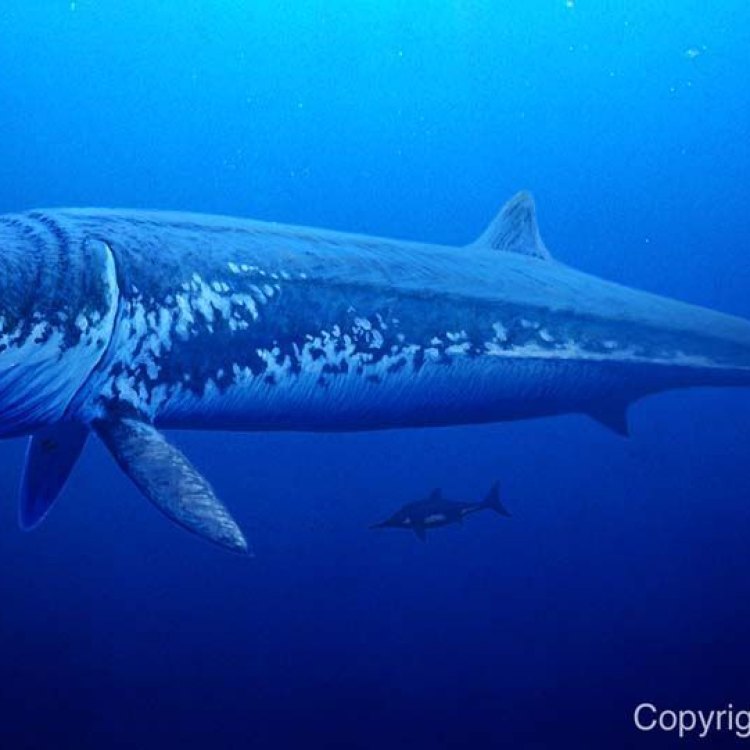
Leedsichthys
Up to 26 meters
Leedsichthys, also known as Leeds fish, is a prehistoric marine creature that lived during the Jurassic period. It can grow up to a staggering 26 meters in length and belongs to the Pachycormidae family. These majestic animals can be found in the Jurassic Coast and are known for their elongated body shape. Imagine encountering one of these enormous creatures in the depths of the ocean! #Leedsichthys #JurassicCoast #prehistoric #marinecreature
Animal Details Summary:
Common Name: Leedsichthys
Kingdom: Animalia
Habitat: Marine
The Enigmatic Leedsichthys: A Mysterious Giant of the Sea
As we look out onto the vast expanse of the ocean, we are often reminded of the immense diversity and mysterious creatures hidden beneath its surface. From the tiniest fishes to the largest whales, the ocean is home to an array of fascinating creatures. And one such creature that has captured the attention of researchers and marine enthusiasts alike is the Leedsichthys problematicus.Introduction to the Leedsichthys
With a scientific name that is just as complex as its appearance, the Leedsichthys problematicus is the largest fish ever discovered, measuring up to a staggering length of 26 meters Leedsichthys. The name “Leedsichthys” is derived from the town of Leeds, where the first fossils of this fish were found, and “ichthys” meaning fish in Greek. The species name “problematicus” is a nod to the difficulties associated with studying and classifying this creature due to the rarity of its fossils.Let us dive deeper into the world of this enigmatic giant and uncover some fascinating facts about its habitat, feeding methods, and mysterious existence.
Classification and Distribution
Leedsichthys problematicus belongs to the Animalia kingdom, Chordata phylum, Sarcopterygii class, Pachycormiformes order, and Pachycormidae family. It falls under the same taxonomic group as coelacanths and lungfishes. The majority of the known fossils of this species have been found in England, specifically along the Jurassic Coast, a UNESCO World Heritage Site. However, fossils have also been discovered in other parts of the world, including Germany, France, Chile, and Australia.Habitat of the Leedsichthys
The Leedsichthys lived in the marine environment during the Jurassic period, approximately 160 million years ago. It is believed that this giant fish inhabited warm and shallow seas, where they likely served as a vital part of the ecosystem as filter feeders Little Penguin.Their exact habitat and behavior, however, are still relatively unknown, as fossils are scarce and provide limited information. The Leedsichthys remains a mysterious creature, and researchers continue to study it in the hopes of unveiling more about its way of life.
Feeding Methods
With its massive size, one might assume that the Leedsichthys was a ferocious predator. However, recent studies suggest that this giant fish was, in fact, a gentle filter feeder. This means that it fed on tiny plankton, filtering it out of the water using its elaborate gill rakers.This feeding method is similar to that of today’s baleen whales, and it is believed that the Leedsichthys was a vital player in maintaining balance in the marine ecosystem by consuming large amounts of plankton.
Mysterious Existence
Despite its massive size, the Leedsichthys managed to escape the notice of scientists and researchers for many years. It was not until 1880 that the first fossilized teeth of this fish were discovered by British collector and fossil hunter Alfred Leeds. Over the years, more fossils have been found, but these remains are scarce and often fragmented, making it difficult for researchers to piece together the appearance and true identity of this giant.Only a few complete skeletons have been unearthed, adding to the enigma and mystique of this colossal creature. Its body shape is thought to have been elongated, with small pelvic and pectoral fins and a large tail fin for propulsion. Its overall appearance is believed to be similar to that of a modern-day tuna.
The Color and Size of the Leedsichthys
The remains of the Leedsichthys problematicus suggest that it had a grayish coloration, a common hue among marine creatures. Its massive size, especially for a fish, is undoubtedly one of the most fascinating attributes of this species. It is estimated that an adult Leedsichthys could reach up to 26 meters in length, making it the largest fish known to have existed.To put this into perspective, the Leedsichthys was almost three times the size of the modern-day whale shark and larger than the infamous prehistoric predator, the megalodon.
The Importance of Studying the Leedsichthys
The Leedsichthys problematicus may have gone unnoticed for many years, but its importance in the field of marine research cannot be overlooked. Its fossilized remains have helped scientists gain a better understanding of the marine ecosystem during the Jurassic period.Moreover, the Leedsichthys serves as a reminder of the sheer diversity of life that has existed on our planet and how little we truly know about these creatures.
The Mesmerizing Mystery Continues
As researchers and scientists continue to study the Leedsichthys problematicus, we can only hope to unveil more of its secrets. The limited number of fossils and information available about this giant fish only adds to its mystique and captivating allure. And while many aspects of its way of life remain unknown, one thing is for sure: the Leedsichthys was not only a massive creature but also an important player in the marine ecosystem during its time.So the next time you gaze out into the ocean, remember that beneath its surface, there is still a world waiting to be discovered, with mysterious giants like the Leedsichthys waiting to be understood.

Leedsichthys
Animal Details Leedsichthys - Scientific Name: Leedsichthys problematicus
- Category: Animals L
- Scientific Name: Leedsichthys problematicus
- Common Name: Leedsichthys
- Kingdom: Animalia
- Phylum: Chordata
- Class: Sarcopterygii
- Order: Pachycormiformes
- Family: Pachycormidae
- Habitat: Marine
- Feeding Method: Filter Feeder
- Geographical Distribution: Global
- Country of Origin: England
- Location: Jurassic Coast
- Animal Coloration: Gray
- Body Shape: Elongated
- Length: Up to 26 meters

Leedsichthys
- Adult Size: Up to 26 meters
- Average Lifespan: Unknown
- Reproduction: Sexual
- Reproductive Behavior: Unknown
- Sound or Call: Unknown
- Migration Pattern: Unknown
- Social Groups: Unknown
- Behavior: Gentle and slow-moving
- Threats: Extinction due to environmental changes
- Conservation Status: Extinct
- Impact on Ecosystem: Unknown
- Human Use: Fossils
- Distinctive Features: Large size and filter feeding
- Interesting Facts: One of the largest known fish species
- Predator: Unknown

Leedsichthys problematicus
The Leedsichthys: A Gentle Giant Lost to Time
When we think of large animals, our minds often go to the majestic elephant or the powerful blue whale. However, there was once a creature that dwarfed them both - the Leedsichthys. This prehistoric fish holds the title of being one of the largest known fish species in history, reaching sizes of up to 26 meters. Despite its massive size, the Leedsichthys had a gentle and slow-moving behavior, making it quite a unique creature in the ocean's depths PeaceOfAnimals.Com.Size and Appearance
To truly grasp the magnitude of this fish, one must imagine standing next to a 26-meter-long animal. Its average length, however, was between 16 to 19 meters, still making it a true giant in the ocean. It had a slim body, similar to a tuna, but its most striking feature was its massive mouth. With a width of over 3 meters, the Leedsichthys had a nearly vertical mouth filled with tiny, comb-like teeth perfect for filter feeding.
Behavior and Reproduction
Although there is still much unknown about its behavior, what we do know is quite fascinating. The Leedsichthys was a gentle and slow-moving fish, using its massive mouth to filter the water for nutrients. Its reproductive behavior is also a mystery, as no evidence has been found to suggest whether they laid eggs or gave birth to live young.
Threats and Extinction
The Leedsichthys swam the oceans during the Jurassic period, around 155 to 125 million years ago. Unfortunately, as with many prehistoric creatures, their existence was cut short due to environmental changes Leopard Lizard. With the Earth's climate and geography shifting, the Leedsichthys could not adapt, leading to its extinction.
Impact on Ecosystem
As filter feeders, the Leedsichthys played a crucial role in balancing the ocean's ecosystem. They would consume large amounts of plankton and smaller fish, helping to regulate the populations of those species. With their demise, the ocean's food chain was disrupted, leading to potential consequences for other marine animals.
Human Use and Fossils
While no live specimen of this fish exists today, we have managed to piece together its existence through fossil records. The Leedsichthys' bones have been found in many parts of the world, from Europe to South America. Their enormous size and unique features, such as their thin, almost transparent bones, have made them highly sought after by paleontologists and collectors alike.
Distinctive Features and Interesting Facts
The most obvious feature of the Leedsichthys was its incredible size, earning it the title of one of the largest known fish species in history. However, its size was not the only remarkable thing about this fish. Its ability to filter feed through its massive mouth was a distinctive feature that set it apart from other large fish. Another interesting fact about the Leedsichthys is that, unlike most other fish, its bones were made of cartilage, not bone, making them harder to preserve as fossils.
Conservation Status
Despite being an extinct species, the Leedsichthys still holds a conservation status. It is listed as "extinct" by the International Union for Conservation of Nature (IUCN), joining the growing list of species lost to time. This status serves as a reminder of the impact that environmental changes can have on the Earth's animal inhabitants.
Human's Ongoing Fascination with the Leedsichthys
From fossils to museums, the Leedsichthys continues to capture the imagination of people today. Its massive size and gentle behavior make it a popular topic among paleontologists, while its impressive fossils can be found in museums and exhibitions worldwide. However, with advancements in technology and science, researchers are continuously uncovering new information about this lost giant of the sea.
Leedsichthys: A Gentle Giant Lost to Time
As we continue to learn more about the Leedsichthys, it becomes clearer that this was a truly unique creature. From its massive size to its gentle nature, it provides a glimpse into the world of prehistoric marine life. Its extinction serves as a reminder of the fragility of our planet and the importance of preserving and protecting our environment's delicate balance. The Leedsichthys may no longer swim in our oceans, but its legacy lives on, captivating the curiosity of generations to come.

The Enigmatic Leedsichthys: A Mysterious Giant of the Sea
Disclaimer: The content provided is for informational purposes only. We cannot guarantee the accuracy of the information on this page 100%. All information provided here may change without prior notice.












